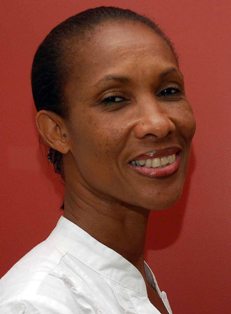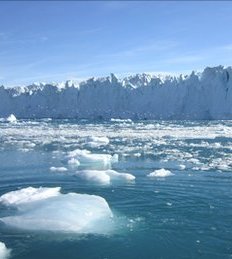Archive for March 9th, 2011

Law clinic challenges regional students
 (CNS): The region’s future legal experts gathered in Cayman this week when the Cayman Islands Law School(CILS) hosted the Caribbean Law Clinic for the second time. Students from eight legal institutions around the region and the southern United States are engaging in intensive cross jurisdictional legal research in applying local Cayman law and practice and provide legal advice to five questions set by the CI Legal Department. Law School Director of Legal Studies Mitchell Davies explained that the questions cover Cayman Islands criminal law and practice, evidence, judicial review, family and immigration laws.
(CNS): The region’s future legal experts gathered in Cayman this week when the Cayman Islands Law School(CILS) hosted the Caribbean Law Clinic for the second time. Students from eight legal institutions around the region and the southern United States are engaging in intensive cross jurisdictional legal research in applying local Cayman law and practice and provide legal advice to five questions set by the CI Legal Department. Law School Director of Legal Studies Mitchell Davies explained that the questions cover Cayman Islands criminal law and practice, evidence, judicial review, family and immigration laws.
The finals starting on Friday morning at Kirk House will challenge the students’ ability to tackle the legal scenarios. “Clinics require students to collaborate, which encourages team-building and professional interaction with individuals they have not previously met. Students also have the opportunity to develop their legal advocacy skills,” said Davies. The clinics can also be a source of timely legal research and analysis for the governmental agency setting the questions in the host country.
The clinic will conclude with presentations from student teams to a panel comprising Grand Court Judge the Hon. Charles Quin, QC, Solicitor General Cheryll Richards QC, and Senior Crown Counsel Reshma Sharma.
Participating schools are CILS; Eugene Dupuch Law School, Nassau, Bahamas; Hugh Wooding Law School, St. Augustine, Trinidad; Norman Manley Law School, Kingston, Jamaica; Thurgood Marshall Law School, Houston, Texas; Florida Coastal, Nova Southeastern University and Stetson University law schools, all in Florida.
Every six months, participating schools rotate hosting the clinics which are organised by the American Caribbean Law Initiative (“ACLI”). (Visit www.fcsl.edu/acli for more about the ACLI and the clinics.)

Plaque tells story of George Town tree
 (CNS): The first ever neem tree to be planted in the Cayman Islands now has a plaque explaining its significance. The tree which is near to the George Town library was planted Dr Joseph Jackman who was director of the department of environment during the 1970s. According to a release from GIS Jackman brought the first seeds from Montserrat in October 1975. The plaque reveals that the neem tree is one of the world’s most beneficial plants. All parts of the tree are said to have medicinal use. And it has been used in India, where the tree is native, for medications for thousands of years. Here in Cayman this particular tree provides welcome shade for George Town’s workers who sit under it at lunchtime when they are looking for a quiet place to rest or chat.
(CNS): The first ever neem tree to be planted in the Cayman Islands now has a plaque explaining its significance. The tree which is near to the George Town library was planted Dr Joseph Jackman who was director of the department of environment during the 1970s. According to a release from GIS Jackman brought the first seeds from Montserrat in October 1975. The plaque reveals that the neem tree is one of the world’s most beneficial plants. All parts of the tree are said to have medicinal use. And it has been used in India, where the tree is native, for medications for thousands of years. Here in Cayman this particular tree provides welcome shade for George Town’s workers who sit under it at lunchtime when they are looking for a quiet place to rest or chat.
Minister of District Administration, Works, Lands and Agriculture, Juliana O’Connor-Connolly, who unveiled the commemorative plaque last month said that Cayman needs to celebrate its agricultural history and should share the stories with residents and visitors alike. Dr. Jackman – who was also the Islands’ Chief Agricultural and Veterinary Officer between 1976 and 1982 – was on hand for the unveiling.
Shuttle Discovery lands after final voyage
(Reuters): The space shuttle Discovery capped a successful construction mission with asmooth landing in Florida on Wednesday, ending a 27-year flying career for NASA’s most-traveled spaceship as the agency faces an uncertain future. Discovery commander Steven Lindsey circled his ship through clear, sunny skies over the Kennedy Space Center to burn off speed, then bee-lined toward the marsh-surrounded runway a few miles from where the shuttle blasted off for its final space flight on Feb. 24. Discovery touched down at 11:57 a.m. EST (1657 GMT) to wrap up a cargo run and construction mission at the International Space Station. The shuttle accumulated 365 days in orbit over 39 missions, racking up more than 148 million miles (238 million km).
It will now be prepared for display at the Smithsonian National Air and Space Museum.

Deputy becomes heir apparent for JGHS top job
 (CNS): The Department of Education Services has announced the appointment of Lyneth Monteith as Acting Principal of the John Gray High School. Montieth is currently one of the schools deputies and her appointment is in preparation for the departure of the current head, Aldin Bellinfantie, who completes his secondment at the end of this school year. Chief Education Officer Shirley Wahler explained that the move offers an early start on an important leadership transition for the school, which is facing numerous challenges. “If we begin the transition now, we will be able to ensure we have a strong, sustainable and effective leadership team in place to take the school through the next phase of its development,” she said.
(CNS): The Department of Education Services has announced the appointment of Lyneth Monteith as Acting Principal of the John Gray High School. Montieth is currently one of the schools deputies and her appointment is in preparation for the departure of the current head, Aldin Bellinfantie, who completes his secondment at the end of this school year. Chief Education Officer Shirley Wahler explained that the move offers an early start on an important leadership transition for the school, which is facing numerous challenges. “If we begin the transition now, we will be able to ensure we have a strong, sustainable and effective leadership team in place to take the school through the next phase of its development,” she said.
Monteith is a very experienced Caymanian educator who has had the benefit of whole-campus management experience at the George Hicks Middle School. She is also a former school leader, senior tutor and head of department at George Hicks. Her formal qualifications include a bachelor’s degree in education and a master’s degree in educational leadership. Monteith assumed her new role on Monday.
“I am both humbled and excited about this new leadership opportunity,” she said. “John Gray has many long standing challenges, but it also has many talented and committed teachers and managers. If I can harness and focus our strengths, we will achieve the excellence of which we are capable. My motto to staff is simple: Together we can.”
Wahler said that when students return to school on Monday, 14 March, after the short break, Monteith and her team will be talking to them about setting higher standards.
“We are asking our parents to encourage their children to work with their teachers to help make the school a better learning environment. And also to remind them that education matters and that rules are in place to give them the best possibility for success,” Wahler added. She emphasized the importance of all stakeholders playing their part in the future development of John Gray. She stressed the critical role of parents, and acknowledged the advice and support of the John Gray HSA president and executive.
“Parents and guardians will continue to play a very important role in helping John Gray become the excellent school we know it can be,” stated Wahler.
Bellinfantie, who was seconded from Jamaica’s Ministry of Education in January 2010 to take up the post of John Gray Principal, will finish his term in August. During the transition he will help the DES develop policies that will support improvements in the school’s operation going forward.
“We thank Mr Bellinfantie for his contributions during his time with us, and for accepting the challenge of leadership in a time of change. We are looking forward to his support in the next few months, and wish him all the best on his return to continue his work within the Jamaican education system,” she added.
Education Minister Rolston Anglin said he was delighted that Monteith had accepted the challenge. “She brings to her new role considerable leadership experience, which will provide continuity and stability for the school,” he said. “She will have the support of the DES and ministry, as she works to move John Gray further forward. In the end, there can be no success for the school without the success of our children. If we work together, focusing on that single goal, we cannot fail.”

Violence breeds violence
It was no surprise that the news story about Franz Manderson’s position on the prison system received a significant number of comments expressing the usual call for more punishment and more violence. And while I am no longer surprised by the common belief that more violence is somehow the solution for reducing violence, I am continuously puzzled by it. After all, how can more violence equal less violence?
It’s a question that I don’t believe the people who advocate heavy-handed punishments — from those that believe in spanking children to supporters of capital punishment — ever really think about. I would confidently guess that most, if not all, of the inmates at Northward prison serving sentences or remanded for violent crime were exposed to violence throughout their lives and, guess what, it hasn’t “cured” them. Every law abiding citizen who says the beatings they received as children did them good or at least no harm are kidding themselves.
The reason why they are not in prison is likely because there were many other things in their lives that countered the violence, such as a constant source of love and support from the family or another important adult figure that made them feel safe, secure and valuable. Other lessons that negated violence were the ones which really worked and shaped them into decent people. Most law abiding individuals will find that the real reason for their compliance and orderly behaviour is in spite of the violence they may have encountered, certainly not because of it.
As Chief Officer Franz Manderson revealed when he spoke with CNS, there is no prison in the world where more physical punishment, violence or discomfort will lead to compliant law abiding inmates. He used the perfect illustration when he said, “If you lock a dog in a cage, beat it and starve it, would you really expect it to lick your face when you open the cage door?”
Violence leads to more violence, it does not lead to less – ever.
It may contain it for a period but it will always be there simmering under the surface waiting for an opportunity for revenge. If as a child you learn that your parents or others achieve power and control of you or compliance from you through violence then you in turn will learn to use it on others you want to control or comply with your wishes.
This is not deep psychologically, complicated stuff. The research to prove it is there by the truck load but for some reason society doesn’t want to listen because it doesn’t like the solution which is about treating violence with boundaries, structure and even kindness.
How can we be nice to someone who did something wicked is always the problem that people struggle with and it’s no surprise given that it is the fundamental struggle within Christian/Judeo culture. What do we really believe in, after all, an eye for an eye or turn the other cheek?
What society needs to consider are the reasons why most people don’t commit violent crime and in particular to look more closely at those that have grown up without violence and find out why they are happy, functioning human beings, having never been punished physically.
Society has asked the wrong questions about punishment and constantly focuses on revenge and retaliation instead of education and reform.
Some of the CNS bloggers this week seemed to think that offering inmates an opportunity to be educated while they were in the prison system was an outrage. Personally, I think it is an outrage that they are not given every possible opportunity to learn and therefore change.
It is a myth that prison is easy or that inmates in Northward are all living in the lap of luxury. No amount of TV time, ganja arriving stuffed up chickens or cell phones flung over the wall, can make up for the loss of freedom. Most people who say prison is easy have never been in one and have no concept of life behind bars. The loss of privacy, the loss of choice about eventhe simplest things and the monotony alone cannot ever be seen as anything but punishment.
Right now HMP Northward is overcrowded and full of violent young men coiled like springs waiting for an opportunity to release their emotions the only way they know how – through violence. As Manderson said, the guards are doing a great job at containing that violence and they do it without using any violence themselves.
For many of the young men, however, the violence, abuse and neglect they have suffered so far throughout their lives has probably damaged them beyond repair and they may end up in prison for very long periods because they must be separated from society, to protect the rest of us, if they cannot address their violent behaviour.
However, with the introduction of the bill of rights next year the court systems will be forced to introduce a tariff system for life sentences, meaning that even some of the most violent offenders will eventually be returned to the community.
I cannot under any circumstance see how it is that society could possible think that returning a man who had been behind bars for 30 years that had experienced only more violence, cruelty and discomfort, had not had the chance to be educated, to face his behaviour or to learn a different way to live could come back to the community having learned his lesson about violent crime and become an orderly, law abiding citizen.
Prison works in very few cases and cruel prisons work even less.
Society must address violence much, much earlier in the life cycle of its people. We must strive to eliminate all kinds of abuse and violence from our communities and find ways of creating consequences for those who break the rules that are constructive. From dealing with naughty children to grown men, more violence cannot break the cycle of violence. The popular sentiment that calls for more cruelty and revenge will never put a stop to violent crime.
Manderson is well aware that public opinion is going to be against him as he tries to make the prison system one that deals with addressing criminal behaviour rather than just punishing it, creating a system that strives to make changes rather than fuelling the violent status quo, but I, for one, wish him well as I believe a future with less violence, and not more, depends on it.

Quicker polar ice loss to drive up sea levels
 (BBC): Ice loss from Antarctica and Greenland has accelerated over the last 20 years, research shows, and will soon become the biggest driver of sea level rise. From satellite data and climate models, scientists calculate that the two polar ice sheets are losing enough ice to raise sea levels by 1.3mm each year. Overall, sea levels are rising by about 3mm (0.12 inches) per year. Writing in Geophysical Research Letters, the team says ice loss here is speeding up faster than models predict. If the increase rate persists, water from the two polar ice sheets could have added 15cm (5.9 inches) to the average global sea level by 2050.
(BBC): Ice loss from Antarctica and Greenland has accelerated over the last 20 years, research shows, and will soon become the biggest driver of sea level rise. From satellite data and climate models, scientists calculate that the two polar ice sheets are losing enough ice to raise sea levels by 1.3mm each year. Overall, sea levels are rising by about 3mm (0.12 inches) per year. Writing in Geophysical Research Letters, the team says ice loss here is speeding up faster than models predict. If the increase rate persists, water from the two polar ice sheets could have added 15cm (5.9 inches) to the average global sea level by 2050.